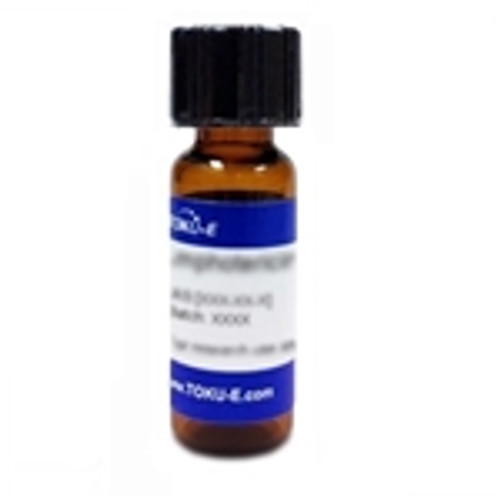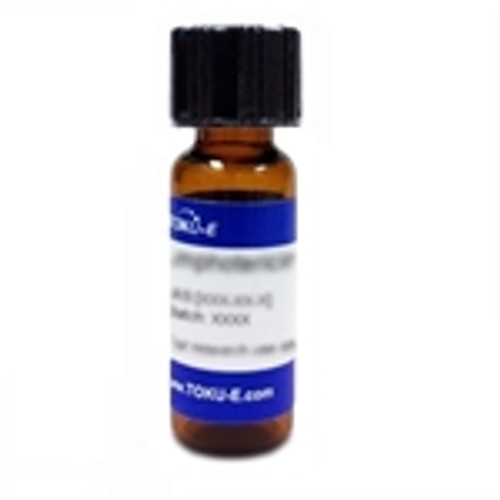Nystatin is a fungicidal and fungistatic polyene antifungal and growth promoter, first reported in 1950. It is a complex of three components: A1, A2 and A3. Nystatin functions by accumulating cholesterol and thereby sequesters lipid from cell membranes. It can be used as a bioprobe and widely used antifungal. It can also be used in quantum dot research, since cholesterol depletion can block several lipid raft-dependent endocytic pathways.
Nystatin A1 is soluble in DMF and DMSO, moderately soluble in methanol and ethanol, and sparingly soluble in water.
We also offer:
| Mechanism of Action | Nystatin, like most polyene antifungals, binds to sterols in the fungal cell membrane leading to formation of ion channels in the wall, ion imbalance and cell death. |
| Microbiology Applications | Nystatin is commonly used in clinical in vitro microbiological antimicrobial susceptibility tests (panels, discs, and MIC strips) against fungal isolates. Medical microbiologists use AST results to recommend treatment options. Representative effective ranges include:
For a representative list of Nystatin MIC values, click here. |
| Plant Biology Applications | Nystatin can be used in plant tissue culture to control contamination. The first few days after protoplast isolation are the most critical in terms of establishing sterile culture. Authors found the most satisfactory control of protoplasts from leaf mesophyll cells was Nystatin (25 U/ml) in combination with carbenicillin (250 µg/ml)(Watts and King, 1973). |
| Eukaryotic Cell Culture Applications | Nystatin is commonly used to prevent contamination in cell culture.
Quantum dots can be used to deliver and monitor biomolecules, but the study of the uptake mechanism is just beginning. Researchers found that Nystatin is a highly selective inhibitor of the lipid raft-dependent pathway and the uptake of SR9 is a lipid raft-dependent process, thus it can be a valuable compound for quantum dot research (Xu et al, 2010). Nystatin can induce interleukin (IL)-1, IL-8, and tumor necrosis factor a secretion in TLR2-expressing THP1 cells. |
| Solubility | Soluble in DMSO and DMF. Moderately soluble in methanol and ethanol. Sparingly soluble in water. |
| References |
Chong CN and Rickards RW (1970) Macrolide antibiotic studies. XVI. The structure of Nystatin. Tet. Lett. 59:5154 Finkelstein A and Holz R (1973) Aqueous pores created in thin lipid membranes by the polyene antibiotics Nystatin and Amphotericin B. Mem. 2:377-408 PMID 4585230 Hazen EL and Brown R (1950) Two antifungal agents produced by a soil actinomycete. Science 112:423 Sevtap Arikan (2002) In vitro activity of Nystatin compared with those of liposomal Nystatin, Amphotericin B, and Fluconazole against clinical Candida isolates. J. Clin. Microbiol. 40(4):1406-1412 Watts JW and King JM 1973) The use of antibiotics in the culture of non-sterile plant protoplasts. Planta. 113(30:271-277 Xu Y et al (2010) Nona-arginine facilitates delivery of quantum dots into cells via multiple pathways. J. Biomed. Biotechnol ID 948543, 11 pp. Zielinski J. et al (1988) The structure of Nystatin A3, a component of Nystatin complex. J. Antibiot. 41:1289 |








